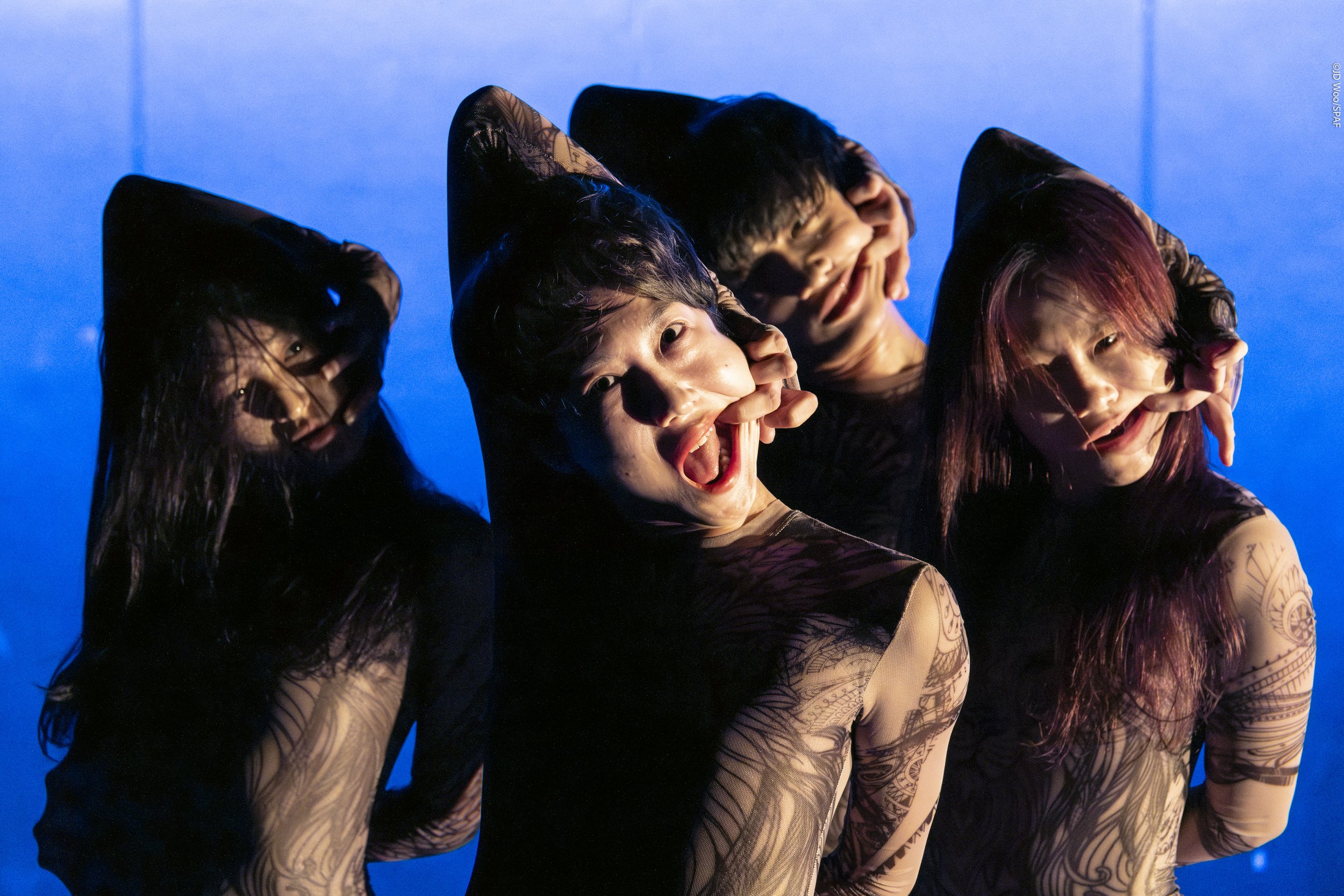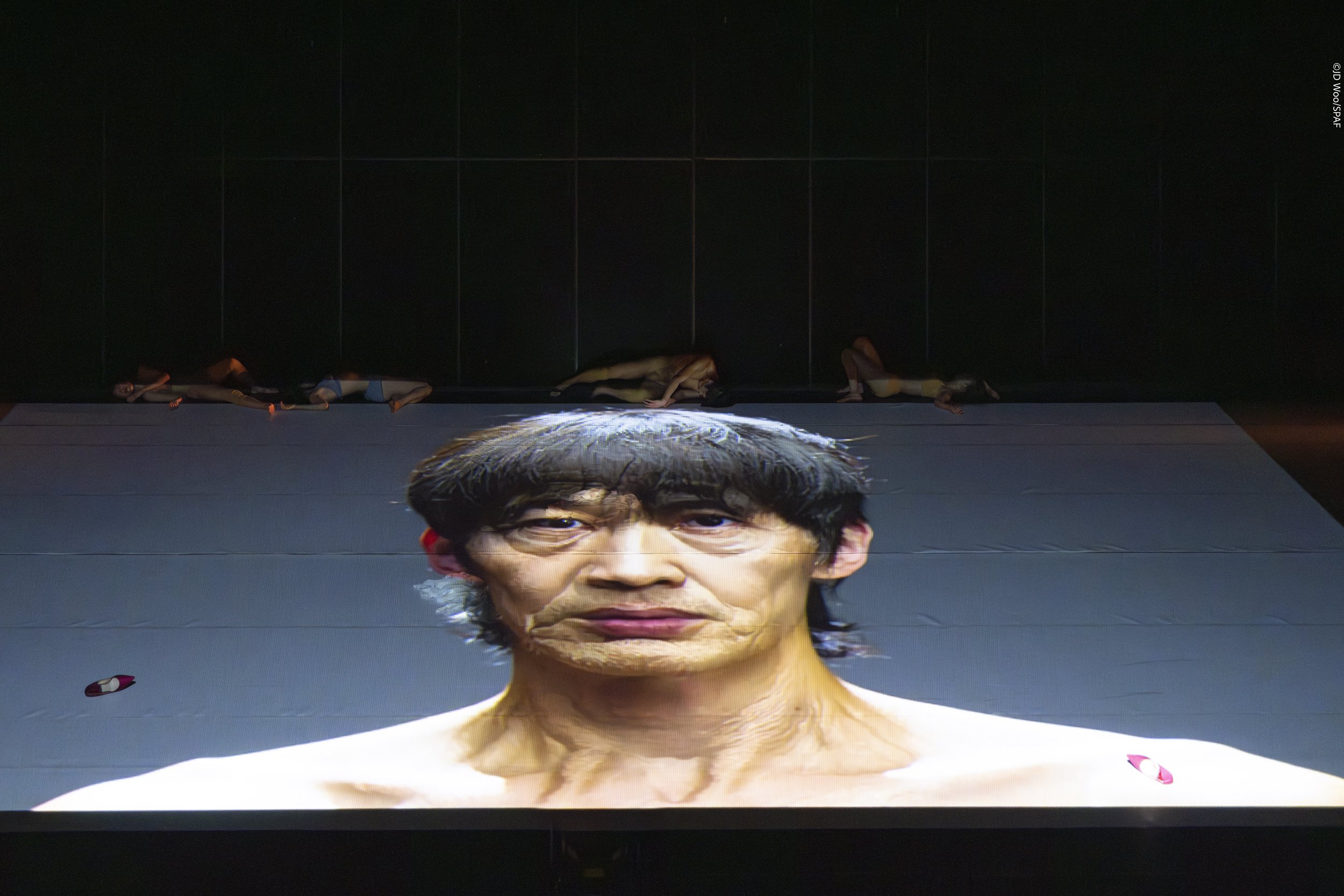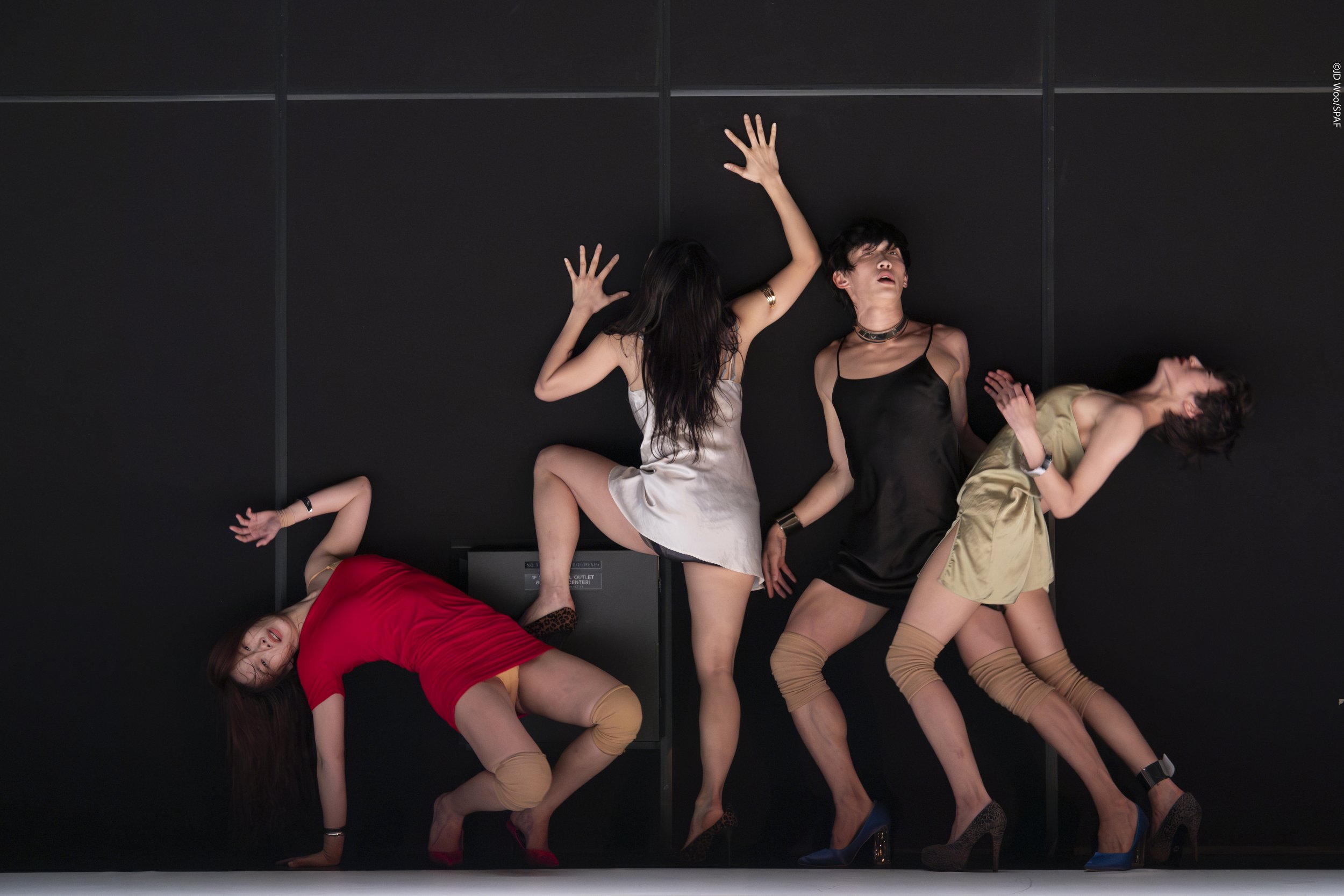











Ezras
■Critics
"Provocative and wild explosive power, pure physical strength"
"What makes this work stand out is their camaraderie and care, which can be read intermittently in a performance that seems like a return to savagery and madness displayed by humans chronically exposed to anxiety."
"The concentration of the work, which makes the audience feel a strange sense of discomfort and discomfort, and the coexistence of contradictory properties, just through the performer's body and actions, firmly guarantees the audience's gaze. And the strong aftershock that lingers even after that gaze makes us continue to ask questions." (jihyun Lee - dance critic, Nov. 2024)
■Credit
Photo by ⓒ2024 SPAF / JD Woo
Artistic Director: Hunmok Jung
Performer: Mijeong Kwon, Myungin Yoon, Jeong Bin Seo, Minuk Choi
Stage Manager: In-sung Kim
Lighting Designer: Jaeeok Kim
Costume: Kyung-sul Bae
Digital art: VRUNCH
Artistic Assistant: Seungkwan Yang
Sound Editing: Juwon Seo
Producer: Sin Ae Park
Project Manager: Hee-ji Seo
Presented by SPAF(Seoul Performing Arts Festival)
Produced by JUMOK Dance Theater
Following <Yaras>, <Ezras> is the second performance in Jung Hunmok's series 'Transhumanism and Love for Humanity.' As explored in the first installment, <Ezras> further delves into themes concerning the fu-ture of humanity and the concept of "borderlessness." Centered around the human body, it addresses various "transboundary" issues on stage, complemented by media arts. With a contemporary sensibility and grounded imagination, the work explores themes such as the "existence of reality and virtual reality," "hu-man and non-human," and "transhuman and genderless."
The term "Ezra" derives from the Hebrew word "azar,'"' meaning "help" and "protection." Historically, Ezra was a religious leader of exiles who returned from Babylonia in the 4th century BC. He played a pivotal role in reforming the Jewish community, leading rituals, offerings, and liturgies. The performance intentionally excludes religious or political perspectives, focusing instead on its portrayal of Ezra as a "protector" or "me-diator." Here, Ezra is depicted as a fictional character who leads a tribe named "Ezras."'
In the first performance of the series, <Yaras>, the tribe Yaras appears in a stage space reminiscent of a museum. Each individual within this tribe is uniquely characterized, with their immature bodies distorted and misunderstood. Their conflicting identities converge, poised for explosive collision, yet ultimately dis-sipating without resolution.
In <Ezras>, the tribe evolves from Yaras. These individuals inhabit a structured society, functioning as social beings who awaken to and conform with standardized bodies. Amid restrained stimuli pushed to extremes they vehemently resist and struggle against their environment, seeking destruction. Despite striving for homogeneity and solidarity within their collective intelligence, they lose their freedom and confront further disconnection. They persist in their struggle.
The performance <Ezras> unveils the misinterpreted human body, pushing the boundaries of what is possible. It challenges humanity's prejudices and portrays the distorted essence of human existence. In doing so, it constructs a unique worldview encapsulating contemporary discourses within the liberated space of<Ezras>, where barriers have been dismantled.

